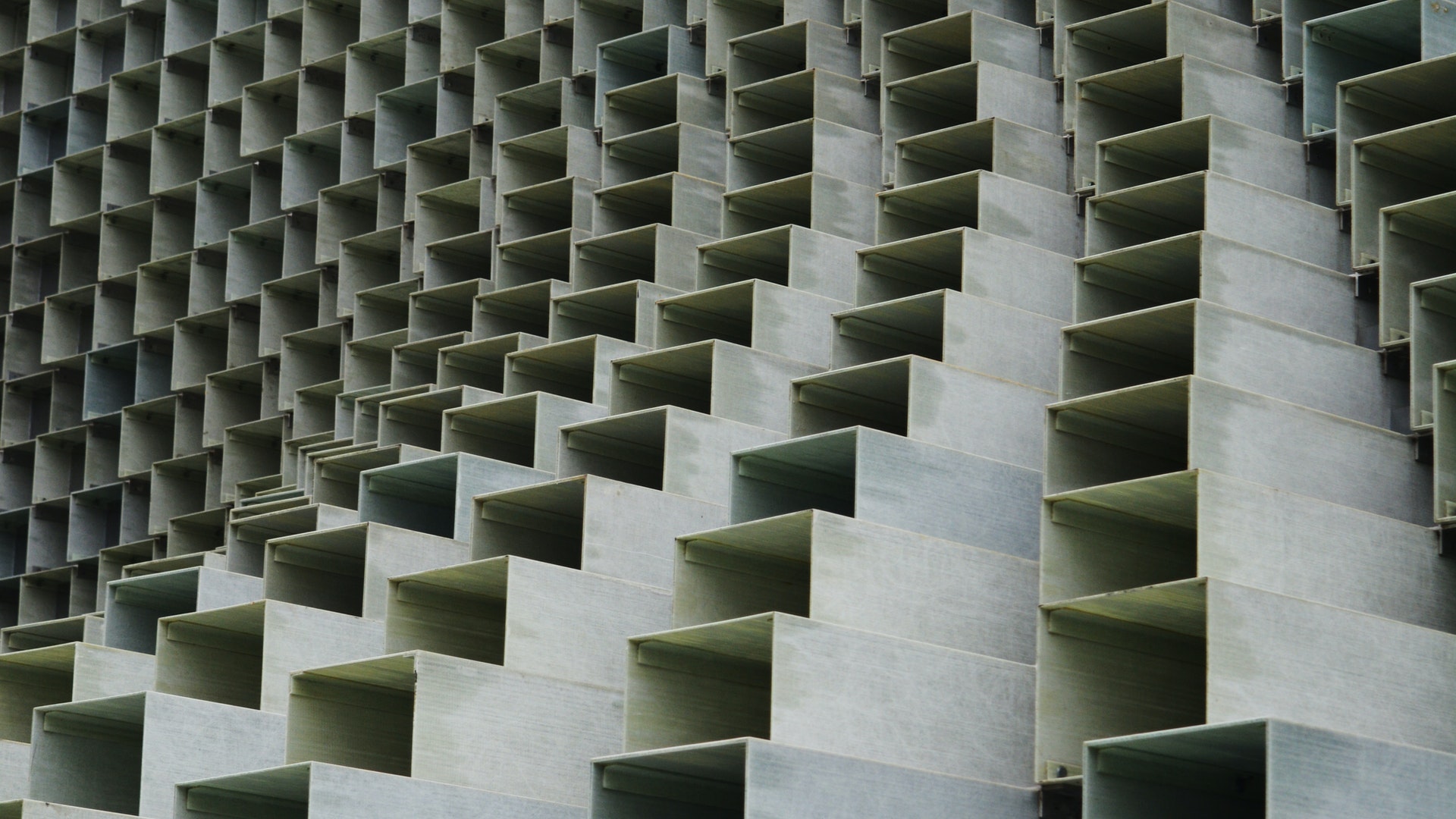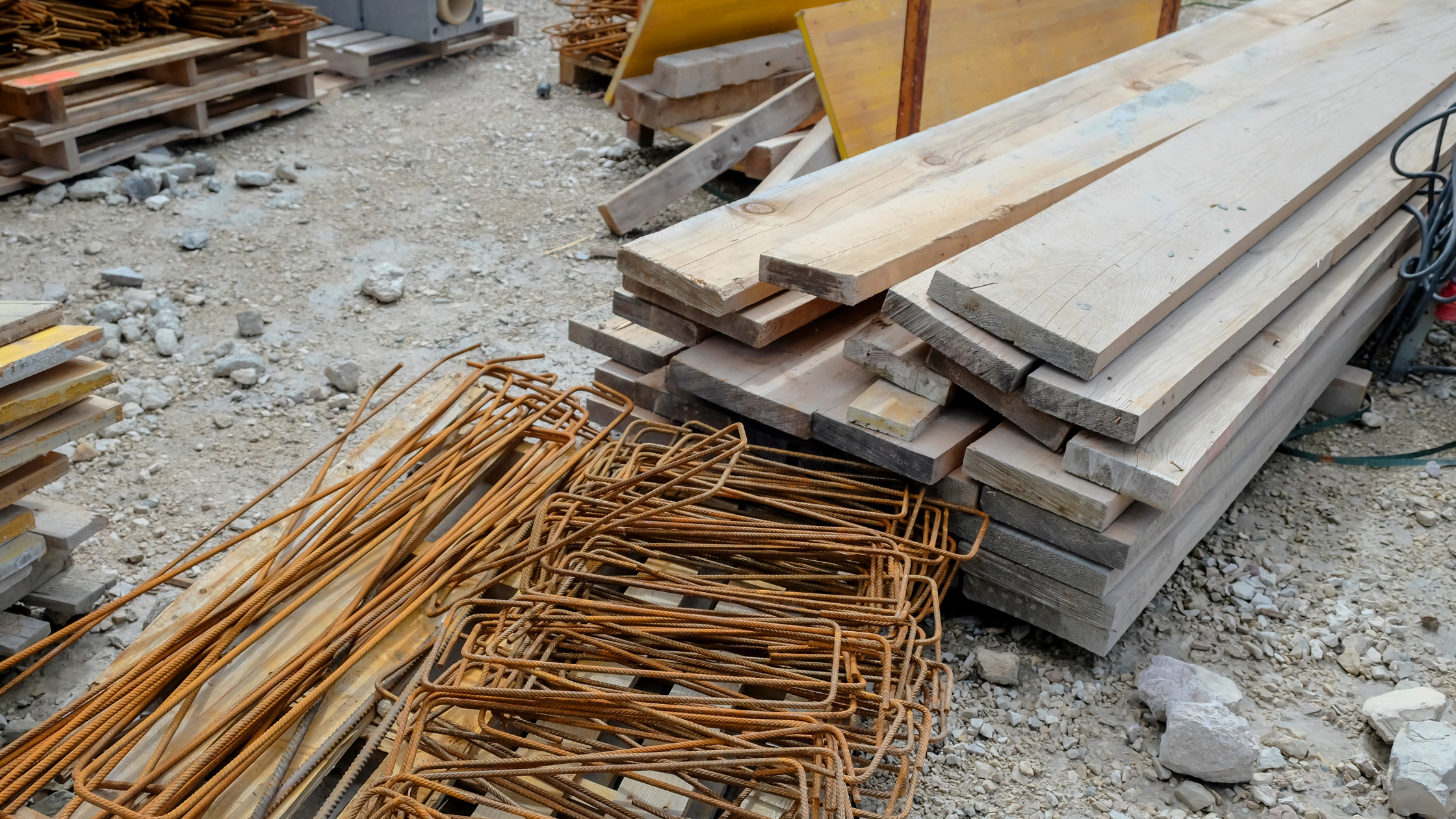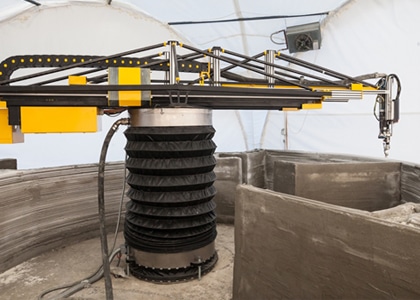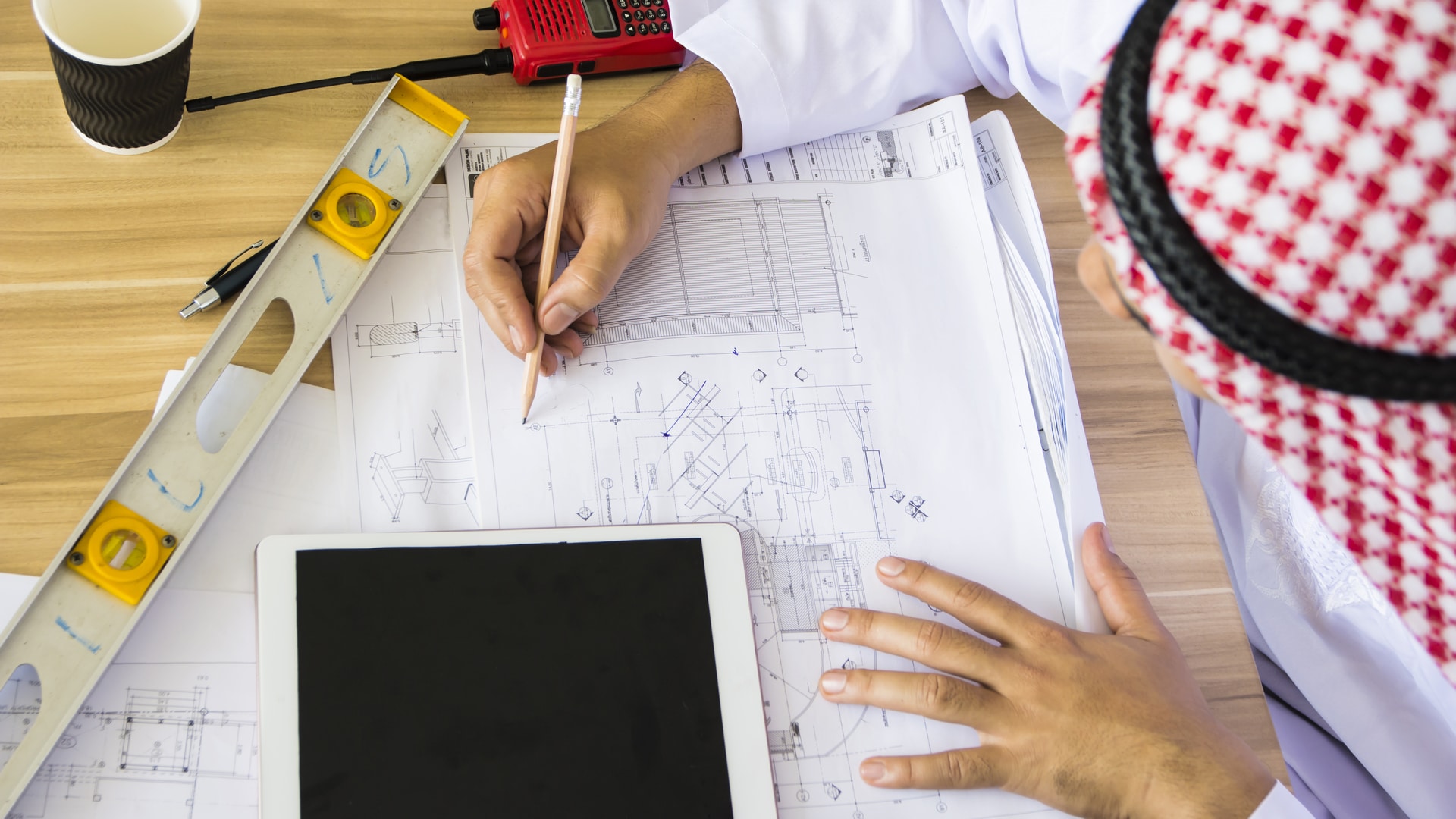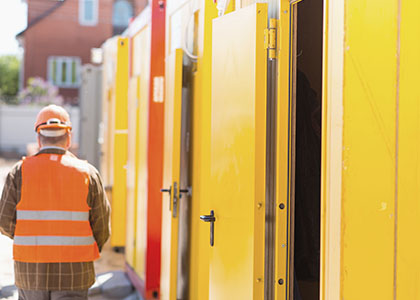Home / Blog / Building Materials For The Construction Companies
Of the three themes driving the Kingdom of Saudi Arabia’s Vision 2030, there is great emphasis on sustainable practices across all sectors of the economy. This is an especially important consideration in the construction industry, which is expected to drive the country’s post-oil economy. Vision 2030 will help support the building of a diverse economy – including, driving tourism, health and education development, manufacturing, and trade – through the development of cities throughout the Kingdom. This master plan requires considerable infrastructure, from the construction of buildings to house recreational spaces, schools, hospitals, roads, and transportation required for effective connectivity.
As the Kingdom builds its strategic roadmap and outlines objectives for Vision 2030, sustainable practices remain a top priority. The means to achieving the latter themes of building a vibrant society and an ambitious nation include practices that reduce environmental impact across all businesses, while building a country with strong roots and foundations, as an investment towards a solid future.
Subsequently, when it comes to the construction of infrastructure, Saudi Arabia has particular requirements for architectural design that are particularly adapted to the region’s unique climatic conditions. With very high temperatures during the day and frigid dips overnight, versatile energy-efficient building materials are needed that keep spaces pleasant during the daylight hours and retain the warmth after sunset.
IMPORTANT FACTORS TO KEEP IN MIND WHEN CHOOSING BUILDING MATERIALS
Important factors to consider when construction companies or general contracting companies in Saudi Arabia are choosing between different building materials are their specific properties, and how they are suited to the kingdom’s unique climatic conditions. These properties are:
- Chemical Properties: When considering the chemical properties of building materials, it is important for contractors to factor in the corrosion-resistance of a substance. The external structures of buildings are exposed to environments that are acidic, heavy in salt, or alkali, and building materials need to be able to withstand repetitive cycles of natural wear and tear. Metals, for example, are vulnerable to rust, and if protections are not put in place, a structure can start to corrode.
- Mechanical Properties: The mechanical characteristics of building materials indicate how they will behave under different conditions. Abuse-resistance, elasticity, hardness, plasticity, and strength, among other properties, are all important to consider in the construction of a building structure.
- Physical Properties: With building materials like brick and steel, contractors consider the ‘bulk density’ or physical strength of an object. Another is durability, which is an index of a building materials’ shelf-life. The more durable a material is, the more it can weather climatic fluctuations, and thereby, require less maintenance.
- Thermal Properties: The thermal properties of a building refer to its ability to retain and absorb heat, which in turn determines the need for good ventilation and insulation design. This is a challenge in Saudi Arabia due to the drastic daily swing in temperatures, as the thermal properties also affect the strength and thickness of walls in a building’s construction.
TYPES OF BUILDING MATERIALS USED ACROSS SAUDI CONSTRUCTION
Construction companies and those building a home should know about all the options that can help decide what the best building materials are available to them – from a quality, cost, and regional climatic-needs perspective.
Traditionally cement and steel/ aluminum form the basis of all construction across any site or project. For the sake of clarity, we will discuss them later in the article.
A variety of different building materials are used in the construction of both homes and commercial structures and spaces. Some of the main building materials used in construction are:
- Brick
- Wood
- Clay
Some additional materials like ceramic, stone, slate, and glass are also being used innovatively across buildings and structures in finishing effects. These are materials that are able to withstand the daily temperature changes typical to a desert climate, with extreme heat during the day followed by abruptly low temperatures at night.


Types of building materials: Broadly speaking building materials fall into two categories, naturally occurring and synthetic. Today, both kinds are processed and manufactured, respectively, for construction and building applications. Naturally occurring building materials are also considered green building materials because for the most part, they are already energy-efficient, which means they have reduced environmental impact and save both customers and contractors money long after the construction process is complete.
- Brick is a clay product, made through a process of heating in a kiln. It is a popular choice of construction material, particularly in comparison to wood, because it’s fire-resistant. It’s also an advantageous material because it helps to maintain comfortable internal temperatures, with an ability to absorb humidity, as well as, provide cooling effects in hot summer months. Brick building materials also provide insulation against cold in winter months, such as in Riyadh, where winter evening temperatures are known to fall as low as six to eight degrees centigrade. Brick, however, requires a lot of energy to produce, due to the heat needed to power a kiln. Adobe is a mud-brick alternative comprising water, earth, and natural fibrous materials, which can be air-dried.
- Wood is a natural product that is extremely versatile for processing and transforming into various building materials. Lumber from wood makes boards or planks, that form the basis of many avenues in construction. Wood products are ideal building materials because they are both strong and flexible. In wood processing, a number of by-products are produced which can be reconstructed to produce additional useful building materials. These materials are classified as engineered wood and are excellent for constructing doors, parts of walls, or boards that can be used for other construction needs.
- Mud and clay are building materials that probably bring up images of cave people and Neolithic times, but they are very much a part of modern construction companies’ choices. Generally, clay and mud are used to seal building materials together, and they have the added benefit of providing insulation against external environmental conditions. Today, automated compressors are used to pack soil or clay between building materials, whereas, in the past, this process was accomplished by hand. Other earthen materials akin to mud and clay are rammed earth, which is a durable mixture of clay, gravel, and sand or straw.


- Ceramic building materials are a great way to add character to building construction to both external and internal areas. Contractors can add decorative ceramic tiling to just about anywhere their customers would like, from floors to walls, to countertops, to ceilings. Ceramics are made from clay and are delicate, so it is important for a contractor to consult with their customer about appropriate areas for placement and techniques for upkeep so that tiles maintain an aesthetically pleasing appearance for a long time.
- Stone or rock is historically the oldest building material in the world, as it is a sturdy material, and easily available. Rock has proven to have some disadvantages in modern construction. For one it has considerable mass, and given the plethora of shapes and sizes, can be an awkward building material to work with. Locally quarried stone and limestone from Saudi Arabia are energy-efficient options as they gradually absorb heat throughout the day, keeping the indoor environment pleasant and steady, and slowly release it at night, keeping spaces warm for a long duration.
- Slate is a kind of smooth rock that can be processed and shaped into tiles. Slate is typically used in roofing building materials and is durable and attractive in appearance. Slate can also be used as walling stone to cover outdoor spaces and has a number of advantages, including fire-resistance, as well as, being able to withstand weathering from sulphuric acid, and other kinds of environmental pollution.


- Glass is a building material used to construct windows, which allow natural light into a finished building. Glass is brittle in nature, and manufactured from the sand. Strong and thick varieties are ideal for not only providing visibility but are also abuse-resistance against adverse weather and environmental conditions. Glass building materials are also at the heart of architectural innovations in the past and today. Despite being delicate and breakable, there are processing methods for strengthening it, and making it shatter-proof which make it a versatile building material. Not only can it be used as a load-bearing building material, but also for attractive fenestrations like stained windows or sliding doors.
TRADITIONAL MATERIALS USED IN CONSTRUCTION
For any construction project, the structure would require the use of two of the most basic, yet important building materials. These are:
- Concrete
- Steel


- Concrete is an aggregate material made up of cement, gravel, sand, and water. That’s why its full name is actually ‘reinforced cement concrete. After this building material is processed, it hardens to the strength of stone. For construction purposes, concrete is reinforced with steel rods, which in turn, strengthens the steel framing of a building’s construction. For this process, molds are created in the concrete to encompass the steel bars. It’s important to remember that while the concrete dries immediately, it takes at least 30 days to reach its full-strength capacity. This property of concrete as a building material needs to be factored into construction timelines, as there is an ongoing curing process that allows the concrete to mature until it can fully stand alone. The advantage of using concrete in building construction in Saudi Arabia is that this is a material that can be locally sourced, contributing to the Kingdom’s economy. The disadvantage of concrete as a building material, however, is that it is not energy efficient and has a large carbon footprint.


- Metal is a key building material that construction companies or contractors use for their projects. There are many different types, suitable for varying applications. Chemically speaking, steel, the most commonly used metal in building construction, is a kind of metal alloy, predominantly comprising the element iron. Iron is an ideal building material component because it is both strong and flexible. Alternatives to iron-based steel are aluminum and tin alloys which are more corrosion resistant and rust averse. Steel is a bendable material, that does not crack under challenging and fluctuating environmental conditions, providing the flexibility that contributes to the stability of a building’s structure. In the coastal areas of Saudi Arabia, the corrosion of steel is a challenge to building construction. For this reason, metal building materials require protective coatings against corrosion.
INNOVATIVE USE OF OTHER MATERIALS IN CONSTRUCTION
As the Kingdom becomes increasingly driven towards sustainability in construction, and the industry itself evolves towards best practices, building materials like fabric, glass, plastic, and foam are being increasingly used across construction for their insulating and binding properties. These materials have not only been used historically but, construction companies and contractors are using them nowadays to make indoor spaces not only habitable and comfortable but also aesthetically pleasing.
- Fabric is typically used in the construction of shelters such as tents, but this building material can also be used by construction companies to build permanent structures. The techniques aboriginal and first-nations’ people used to assemble tents, today serve as a template for modern buildings. In structures today, building materials such as fabric membranes are integrated into steel cable frameworks to form shading structures, as well as building frames.
- Grass or thatch is seeing a comeback. With 19th century industrialization, it had previously dropped out of use, replaced by newly processed and manufactured materials. Today, as it is naturally available, it is chosen as one of the many building materials around the world because of its insulating properties and energy efficiency. It has seen modern application as part of roofing construction. Grass or straw can be added to materials such as clay and others of the earthen variety to increase the strength and durability of structures like walls, roofs, etc.


- Plastic is an important building material used in construction, and there are a number of different plastic products with a variety of uses. Plastic is a light malleable material, and different compositions of plastic materials have a varying degree of weather tolerance, flexibility, and resilience. This property makes plastic a building material that is cost-effective, durable, corrosion-resistant in comparison to many metals, recyclable, and easy to install in various areas of building construction. Polyvinyl chloride, for example, is a kind of plastic that is used in flooring building construction because of its durability. It can be easily cleaned, for one, and in addition, it remains strong against the wear and tear of constant foot traffic. In roofing, plastic is a great material because different kinds can be combined to achieve two ends:
- protection of the outer structure from weathering, as well as,
- insulation of a home or commercial structure for energy efficiency.
Plastic is also great for piping in a building as it is water-resistant, as well as resistant to most chemicals, thereby ensuring that the health and safety standards of a building’s construction are met.
- Foam, (synthetic polystyrene) is a lightweight, synthetic building material predominantly used for insulation purposes in construction projects. It is usually affixed around, and in between the wood or cement in a structure. Foam can, therefore, in this way, be used to make structural-insulated panels, sandwiched between two boards of plywood, for example, and then installed into the larger building frame.
- Polyurethane is another kind of foam building material that comes in spray bottles. A technician can spray polyurethane where ever insulation is required, after which it will expand, and set.
Whether it’s construction, contracting, or other related services, get in touch with us to understand more about how to choose the correct building materials and construction company to suit your project needs.
